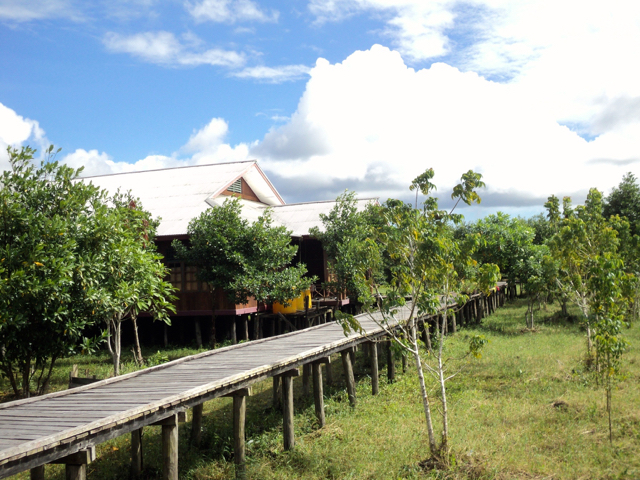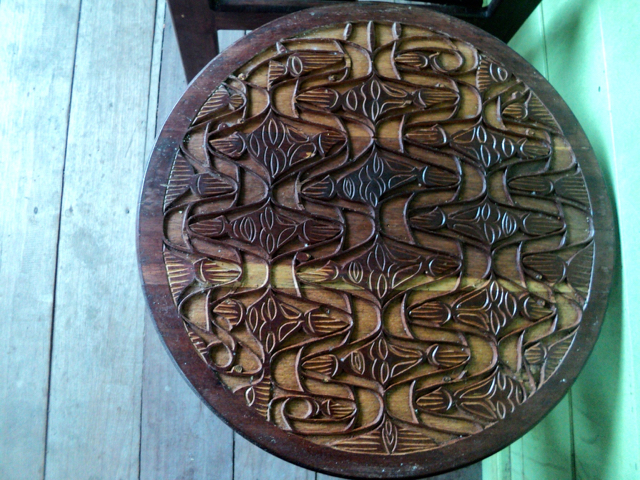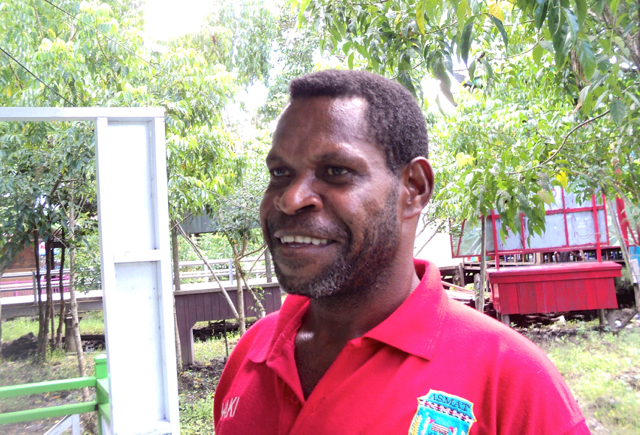- Residents of Yepem on the Indonesian half of New Guinea island are undertaking a reforestation project with the local government.
- Respect for nature is a fundamental part of the worldview of the local Asmat people.
- Locals’ biggest problem is a lack of clean water.
Located on the Siretsy river delta in Papua’s Asmat district is the picturesque hamlet of Yepem, the 655 residents of this coastal enclave on the shore of the Arafura Sea continue to eat traditional foods and practice cultural arts despite the rest of Asia’s gallop into the 21st century.
In Yepem, meals are composed of fish, coconuts, bananas and starchy roots like cassava, taro and sago. Residents harvest shrimp at the nearby Yomot streamlet with nets and fishing poles. The village is dotted with jeuws, or traditional Asmat houses. The structures have high vaulted ceilings held up by poles planted in the earth. Mangi-mangi wood and sago leaves top the roofs.
One jeuw is set aside as the town “carving studio.” The place is filled with carvers and weavers. There is even a little child learning from his dad. The leader of this initiative, Paskalis Wakat, explains that the Asmat people have a philosophy that they must be one with god, the ancestral spirits and the forest. Yepem residents young and old have a deep respect for the forest and see the duty of preserving the environment as one with respecting god and their ancestors.
Kaspar Mamnak, a member of the Asmat Traditional People’s Foundation (LMAA) says locals are not allowed to debark trees. There is a ban on tree cutting along the banks of the Yomot river. It is also forbidden to shoot – with arrow, catapult, or airgun – shore birds. “ They, like us, are utilizing nature and the forest,” he explained.
Given this nature-bound worldview, it is unsurprising that Yepem residents and the local forestry office have a reforestation program going.

A big signboard on the edge of the thicket of mangroves on the way into town announces the program. Topping the board are the insignia of two government outfits and three conservation groups: Asmat regional government, the national forestry ministry, USAID, WWF and Blue Forressis. Below are instructions to visitors: “No tree chopping. Please let us protect the mangrove and river, as per Spatial Bylaw No. 6, 2012, Article 21 on Protected Areas.”
The carving teacher Wakat explains that locals have planted a variety of trees including pit trees, salt trees and mangroves. Deeper in the forest, there was also high-value ironwood.
Salt and pit trees have not always existed in the vicinity of Yepem village, according to LMAA’s Mamnak said they arrived in his lifetime. Locals requested saplings of the tree species from two American catholic missionaries, Alfons Sowada and Uskup Agats. Salt and pit trees are renown for preventing soil erosion. Today, the offspring of those original saplings grow abundantly in the area.

Yosep Ker, the Yepem village head, says that the traditional culture of the Asmat is still strong. They still understand and abide the concept of karuu or sacred ancestral sites. They mark locations that have been deforested with young sago leaves. They do not drink the water in old village sites or ironwood groves. Sacred sites are recognized and ratified by joint treaties. “Those who violate [these agreements] will die sooner or later,” says Ker.
Wakat, the carving teacher, says the village plans to develop itself as a tourist destination. Yepem’s idyllic setting could be a showcase of Asmat tradition, he argues. They still have a lot of sago, forest and sealife.
In the morning, ladies paddle their boats to sea with poles, nets and buckets to gather baby shrimp. On the land, guavas, rubber, rambutan, durian and papaya grow abundantly. Despite the chalky local soil the color and texture of wood pulp, the village is filled with groves of coconut, bananas, beans, eggplant, leafy greens, sugar cane and even coffee.
The biggest problem in Asmat lands is the lack of a regular source of fresh water. Locals collect rainwater with 11-liter tanks. The water source for Agats city (20 miles away) is the Yomot river. A machine at the river’s headwaters sucks water out with a big pipe. “This is a restricted forest,” carving teacher Wakat explained from his speedboat during a recent visit to the intake site. The Asmat see this as a protected forest, filled with huge ironwood trees – so wide that two grown ups linking arms could not wrap their arms around a single tree.
The local public works office had built a shed to store the machine. There was also a long-abandoned guardhouse next to the facility, standing on swampland. Furnaces in the house had long stood un-used. Oil from the machine spilled into the surrounding ecosystem – so much for clean water. When asked about the oil leak, the head of public works Melianus Jitmau evaded the question.
This piece was first published on Mongabay’s Indonesian sister site on Oct. 30, 2016.
Banner image: Paskalis Wakat, a carver from Yepem. Photo by Agapitus Batbual for Mongabay
